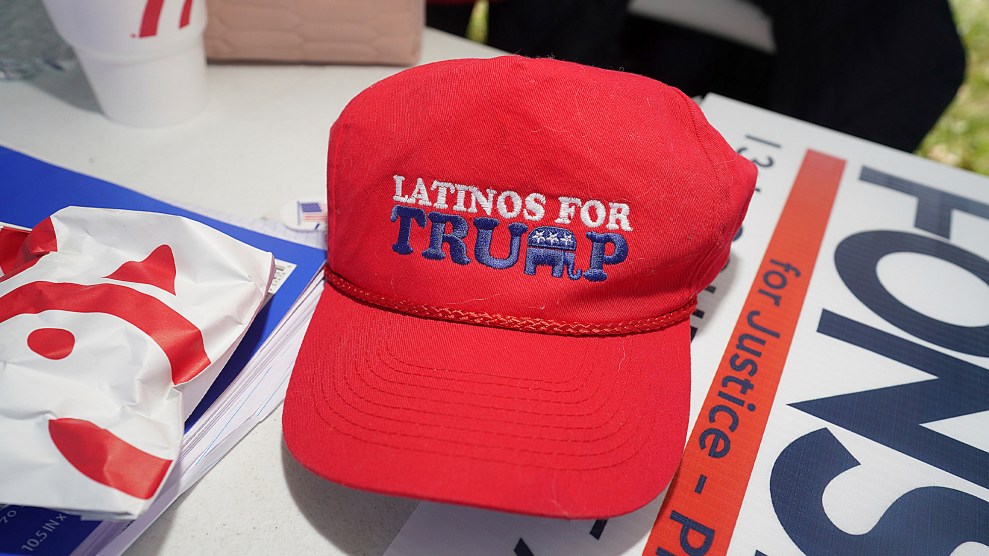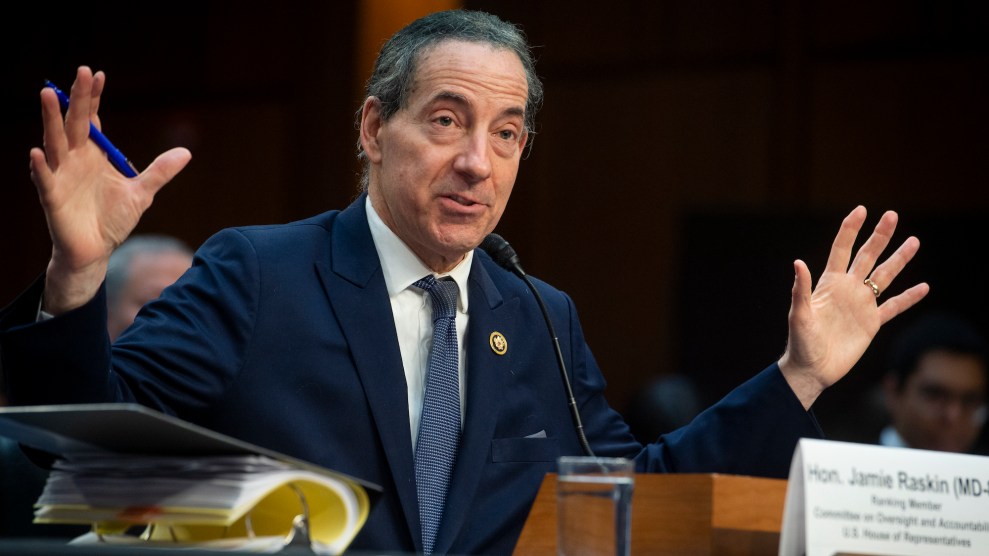President Trump just can’t give up on Sweden:
Give the public a break – The FAKE NEWS media is trying to say that large scale immigration in Sweden is working out just beautifully. NOT!
— Donald J. Trump (@realDonaldTrump) February 20, 2017
I suppose that “beautifully” is subjective, so I won’t comment on that. But Trump is specifically talking about crime here, and a bit of googling tells me that the real target of the fear-o-sphere isn’t so much Sweden in general, but the city of Malmö, just across the sound from Copenhagen. About a third of Malmö’s population was born abroad, the highest rate in Sweden, and to listen to the right-wing media it’s basically become the Beirut of the North ever since immigrants started pouring in. “How Muslim Migration Made Malmo, Sweden A Crime Capital,” blares the Daily Wire. “Malmo, Sweden is the Most Dangerous City in Western Europe,” says Infowars, adding that it’s suffering from “soaring crime, murder.” Over in Britain, the Express puts things plainly: “SWEDEN CRUMBLING: Demands for military intervention as thugs turn Malmo into ‘no-go zone.'”
(Sorry, no links. Google ’em yourself if you really want to read this stuff.)
Luckily for the rest of us, Sweden has quite an excellent crime reporting website, helpfully offered in both Swedish and English. Here are the crime rates in recent years for Sweden’s three biggest cities:
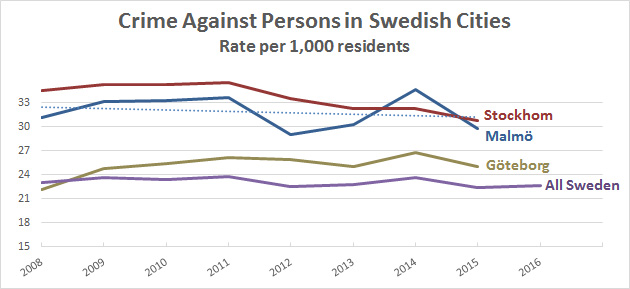
Sadly, the laggard Swedes don’t have 2016 numbers for Malmö even though we’re a full 50 days into 2017, so this will have to do. As you can see, Malmö’s crime rate is higher than Sweden’s, which is the usual case for big cities, but generally lower than Stockholm’s. It’s been trending slightly downward over the past decade. Here’s property crime:
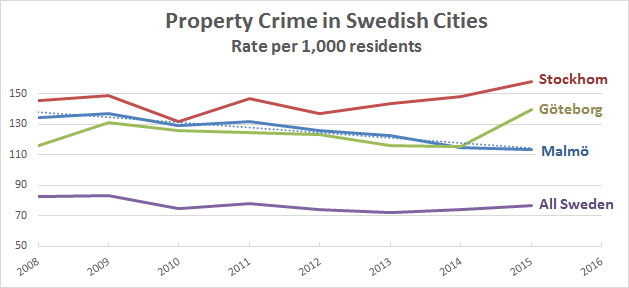
Malmö doesn’t look much like a hellhole, does it? Violent crime looks fairly normal for a city of its size, and it’s trending down. Property crime looks better than you might expect, and it’s trending distinctly down. For a longer-term look at things, here are the total number of murders in Sweden over the past 50 years:
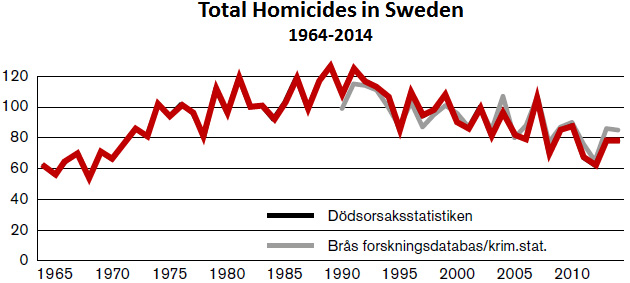
I suppose you all recognize this shape from my hundreds of posts about lead and crime, right? In any case, it’s been trending steadily downward since 1990 while the number of immigrants has been steadily rising. Drilling down, the murder rate between 1991-2014 in Skåne county, which includes Malmö, has stayed flat. However, the murder rate in Malmö itself has nearly doubled in the past two years, increasing from about seven murders in 2014 to twelve in 2016.
Why? Gang wars. This is also the reason Malmö has been the victim of a surprising number of hand grenade attacks lately. Apparently they’re leftovers from the Balkan wars that are smuggled into Sweden and used by rival drug gangs in their turf wars. There’s no question that gang wars fought with hand grenades and handguns are the kind of thing that could put people on edge, but these gangs have been around for a long time and it’s unclear what’s caused the recent surge in turf wars. It might be related to the influx of immigrants, but since immigrants have been moving to Malmö for years, while the gang wars have increased in just the last two, that seems a bit of a stretch.
All this said, Malmö’s overall crime rate, both violent and property, has been pretty flat for the past decade, and the murder rate has been flat for the past three decades. All this has happened while the immigrant population in Malmö has increased more than tenfold.
So that leaves us with the recent gang wars, which have caused an uptick in murders over just the past couple of years. That’s it. If you cherry pick a single city with a sudden upsurge in gang warfare, and then assume it’s all the fault of immigrants, then Sweden becomes the poster child for immigrants and crime. But that’s a pretty thin case.








